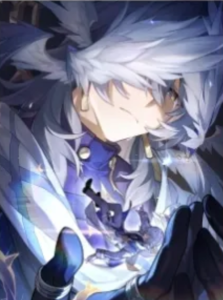In the quantum foam of the universe, existence is never continuous, but a series of “leaps” – and Sunday, the imaginary synergist, is the key to completing the leap in the combat system. Rather than saying that he is a support character, it is better to say that he is a disturbance factor, inserting an irreversible phase change between the macroscopic output data and the boundary of victory and defeat.

Let us first analyze the structure of Sunday. He is not a linear enhancement support, he is a time rearranger. Through skills and ultimate skills, he “advances” the actions of teammates (and their summons) by 100%, which is a numerical operation on the surface, but in fact it is a bend in the arrow of time. In other words, he creates an “extra round of causal loop” for team members, just like inserting a parallel event in a closed gate, so that the output character can interfere with the battle situation multiple times per unit time.
If we understand it from the perspective of thermodynamics, his intervention breaks the original thermal equilibrium of the team and makes the overall system evolve towards a non-equilibrium steady state with higher output efficiency. This is not a simple numerical increase, but a change in topological structure. His existence means that the output path has been expanded from one-dimensional advancement to two-dimensional diffusion.
His light cone – “Flight Back to the Earth” – is an item with extremely rich “energy function” characteristics. When he releases skills or finishing moves on a friendly single unit, he not only restores his own energy, but also enables the target character to obtain a layer of “Holy Chant” state. This state can be superimposed, which is equivalent to adding a series of “exciters” to the output channel, significantly improving the damage ability of the target unit, and recycling combat points when the threshold conditions are met, thereby maintaining the team’s SP conservation. In short: Sunday not only provides exogenous kinetic energy, but also realizes energy regeneration within a closed loop.
If you can’t get an exclusive light cone, you can settle for the next best thing:
* “Dance! Dance! Dance!” is a time accelerator that allows allies to act 16% earlier;
* “But the battle is not over yet” adds an “energy-skill point” linkage mechanism;
* “Past and Future” is like a weakened version of “Holy Chant”, providing a one-time damage enhancement.
The light cones above construct the superposition interference between multiple enhancement paths. Different skill release sequences will lead to divergence points in the system state, thus leading to the “multi-universe development” of the battle situation.
In terms of relics, Sunday chose “The Priest of the Bitter Journey”, which provides a two-way incentive mechanism for speed and critical damage. Under the effect of the 4-piece set, every time a skill or ultimate skill is used on an ally, a critical damage bonus can be added to it (stackable). This can be regarded as a kind of Bose condensation between “assistance-output” – the coupling between individuals is enhanced, and ultimately leads to a collective synergistic outbreak.
The accessories system is more subtle:
* “Lushaka in the Sunken Sea” is linked to energy regeneration through team position;
* “Pinoconnie in the Dream Land” introduces the superposition effect of attribute homogeneity;
* “Wongwak of Life” constructs the initial action advancement triggered by the speed threshold.
These systems enable Sunday to accurately intervene in different rhythm sections in actual combat, forming a multi-level support pattern.
His attribute priority is no longer a simple “stacking of values”, but a “variable function matching”:
* The main attribute uses “critical damage” as the energy output incentive;
* Speed is the key to the intervention of the order of behavior in the whole field;
* Defense and health value ensure the stable existence of its “disturbance source”;
* The secondary attribute is based on speed and critical damage, and a support node matrix with “frequency-energy” as the main axis is constructed.
Next is a more macro modeling-team matching.
**Summoning team system**
In this system, summons can be regarded as “virtual output nodes” with semi-autonomous intelligent bodies. Sunday’s intervention enables these nodes to obtain higher frequency triggering opportunities, and enhances damage output through “holy chants” and critical strike mechanisms. And this structure is similar to an “intermediary field”-it makes the field of action between the summoner and the summon more dense, which is equivalent to adding a combined force.
Main C: Jing Yuan
Support 1: Sunday
Support 2: Robin/Bronya/Hanabi, etc.
Endurance: Fu Xuan/Gallagher/Huo Huo, etc.
**Overload Team System**
This is an array designed with “burst function” as the priority. Sunday maximizes the damage output per unit time of high-frequency and high-burst main Cs (such as Seele, Yinyue, and Yinzhi) through round advancement and critical strike mechanism, just like improving the “output density”. This is a “compressed attack” on the timeline.
Main C: Seele/Yinyue/Yinzhi
Support 1: Sunday
Support 2: Hanabi/Tingyun/Bronya, etc.
Endurance: Sand Gold/Fu Xuan/Gallagher/Huo Huo
Summary-Sunday is not just a character, but also a “nonlinear solution” in the support structure. He achieves cross-dimensional intervention in the output structure by affecting time, energy and system structure. What he embodies is the support philosophy of “sacrificing output to enhance the overall explosiveness of the system”, which is the best annotation of “how the minimum excitation source can pry the maximum output curve”.
Treabar provides the necessary support resources for this systematic construction. From light cone acquisition, relic anchoring, to material circuit opening, it is the first step for players to intervene in this “combat complex system”.
He is a supporter, but he is not weak. He is a phenomenon, an intervention, and an existence with physical meaning.
